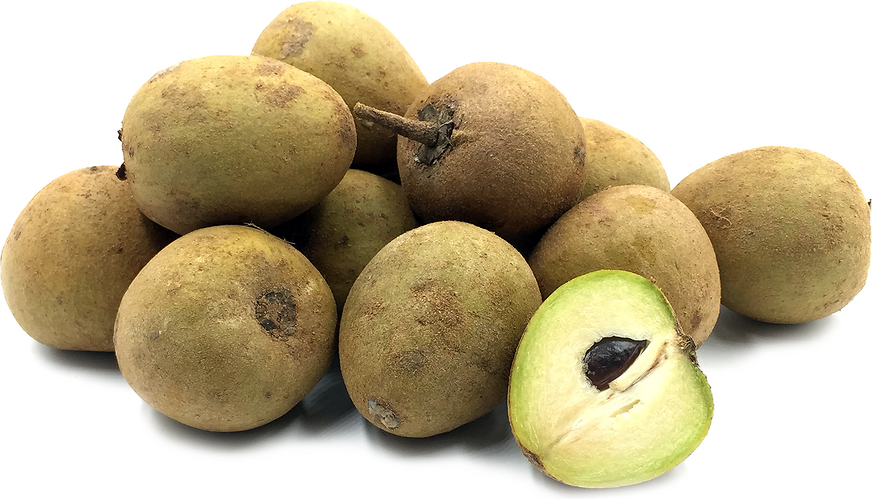


Cricket Ball Sapote
Estimated Inventory, lb : 0
Description/Taste
Cricket Ball sapote are round to oblong fruits with thin, fuzzy, brown skin. They grow to around 5 centimeters in diameter, and as their name suggests, they resemble a cricket ball. The fruits are fragrant, exuding a sweet aroma. The juicy flesh is soft like a kiwi fruit, and is somewhat gritty, similar to a pear. Each Cricket Ball sapote contains 2 to 3 hard, black, elongated seeds. The pulp is peach in color when ripe, and is sweet in taste with undertones of caramel and brown sugar.
Seasons/Availability
Cricket Ball sapote are available year-round, with a peak season in the summer months.
Current Facts
Cricket Ball sapote, also known as Calcutta Large, are a popular Indian cultivar of sapote fruit, and are botanically classified as Manikara zapota. Sapote fruit are also known as Sapodilla, Chickoo or Capota, depending on the region. Cricket Ball sapote have been used to breed other varieties of sapote fruit, as they are valued for their shape.
Nutritional Value
Cricket Ball sapote are a good source of vitamins A and C. They are high in carbohydrates, sugars, calcium and phosphorous, as well as small amounts iron and fiber.
Applications
Cricket Ball sapote are eaten out of hand as a dessert fruit. Split the fruit in half with a knife, and discard the seeds before scooping the soft flesh out with a spoon. They are traditionally blended in milkshakes and in an Indian sweet application called Burfi. Burfi is a dense fudge-like confectionary made with fresh and powdered milk, sugar, ghee and blended fruits, like sapote, for flavoring. Cricket Ball sapote go well with other fruits like bananas, mangoes, dates and figs, as well as flavorings like vanilla, chocolate, brown sugar, cinnamon and nutmeg. Store Cricket Ball sapote in a perforated bag in the refrigerator, where they can last for up to 2 weeks.
Ethnic/Cultural Info
Sapote trees produce a natural latex used in chewing gum, called chicle. The chicle was harvested by the Aztecs and Mayan people, who cut the trunk of the Sapote tree, releasing a milky substance known as chicle latex. Chicle latex was chewed to stave off hunger, and promote oral health. Chicle latex been used for hundreds of years in chewing gum products, and it is theorized that this substance is what Chiclet chewing gum was named for.
Geography/History
Sapote fruits are native to Mexico, Central and South America. Cricket Ball sapote specifically, are an Indian variety of the fruit that are grown commercially in Bengal, Andhra Pradesh, Karnataka, Tamil Nadu and Maharastra. Cricket Ball sapote grow on evergreen trees that thrive in tropical conditions.




